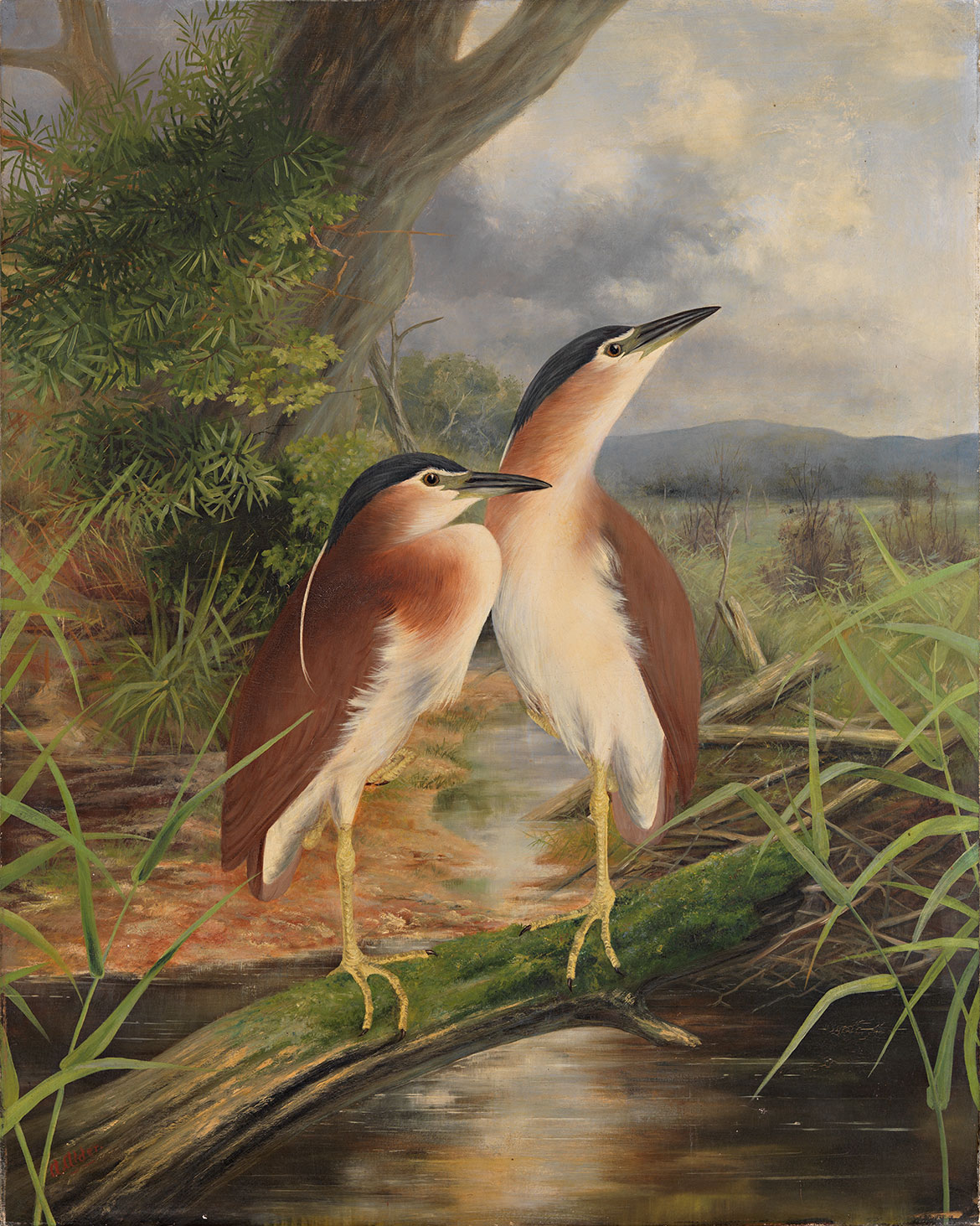Watch our time-lapse as Anthony Alder’s original colours are restored in Heron’s home 1895 showing the full tonal range and sharpness of colour. A final varnish layer on a finished painting has been an artistic practice for centuries. Artists often apply a transparent varnish to give saturation and their desired level of gloss to the painting, as well as to provide a protective coating.
Until the 20th century, natural resins such as dammar and mastic were usually used. Over time these varnishes can become discoloured as the resin degrades, eventually causing a yellow to brown colour shift to the artwork. Whites look a dirty yellow, while blue skies are transformed to a stormy green.
Before conservation

After research and discussion with curators, a conservator may choose to remove a discoloured varnish if the removal can be done safely without risk to the underlying paint layers. This was the case with our recent acquisition Heron’s home by Alder, a Queensland colonial artist and taxidermist. Dating from 1895, the painting depicts two meticulously rendered Nankeen night herons in a riverine landscape, but the deteriorated varnish was giving it a strong yellow cast overall.
Watch as I remove the varnish layer using cotton swabs and a carefully-tailored solvent blend. The artist’s original colours are restored in Heron’s home showing the full tonal range and sharpness of image.
Jocelyn Evans is former Conservator, QAGOMA
Watch | The transformation
After conservation

#QAGOMA